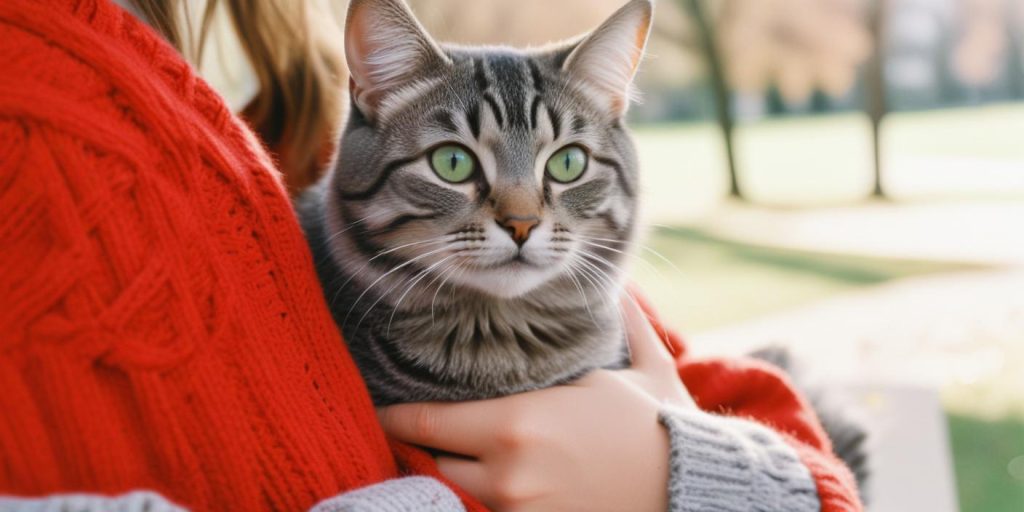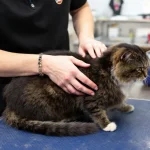How to Hold a Cat Properly
Holding a cat the right way is important to ensure both your safety and your cat’s comfort. Cats can be sensitive to how they’re handled, and improper holding can cause them stress or injury. Whether you’re holding a kitten or an adult cat, here’s a step-by-step guide on how to properly hold a cat:
1. Approach Calmly and Slowly
Before picking up your cat, approach them calmly. Sudden movements or loud noises can startle them, causing them to react defensively. Allow your cat to sniff your hands and get used to your presence before attempting to pick them up. If your cat seems hesitant or anxious, take things slow and wait for them to relax.
2. Use One Hand to Support the Chest
For smaller cats or kittens, gently place one hand under their chest, near the front legs. This will give them a stable base and help you lift them without putting pressure on their abdomen. Make sure your hand is positioned under their ribcage to give them full support.
3. Support the Hind End with Your Other Hand
When lifting, use your other hand to support the cat’s hind end. Place your hand under their back legs or along their rear, ensuring that you’re supporting their body fully. This prevents their back from sagging and helps them feel secure while being held. For larger cats, it’s even more important to support both the front and back.
4. Lift Gently but Securely
Lift your cat slowly and gently while supporting both their chest and hind end. Keep them close to your body to minimize any movement or potential stress. Holding them against your body can make them feel more secure and provide them with the support they need. Avoid lifting them by their limbs, tail, or scruff, as this can cause discomfort or injury.
5. Maintain a Safe Position
When holding your cat, keep them in a position that allows them to feel secure. For most cats, holding them with their belly against your chest works well. Keep your arms close to their body to prevent them from feeling unbalanced or stressed.
If you’re holding a kitten, they may enjoy being cradled with their back against your forearm, almost like you’re holding a baby. For adult cats, some may feel more comfortable resting their front paws on your shoulder or being cradled with their paws against your chest.
6. Keep Your Cat Calm
If your cat starts to squirm or seems uncomfortable, try to remain calm and gently reposition them. If they show signs of stress, such as hissing, growling, or trying to escape, it’s important to lower them to the ground slowly and let them go. Never force your cat to stay in your arms if they’re clearly uncomfortable.
7. Allow Your Cat to Jump Down on Their Own
When it’s time to put your cat down, allow them to jump down from your arms on their own, rather than dropping them. Place them gently on a safe surface, like the floor or a soft surface, and allow them to leave at their own pace.
Things to Avoid:
Lifting by the Scruff: While mother cats may carry kittens by the scruff, it’s not a comfortable or appropriate method for adult cats. This can cause neck strain or injury.
Holding Too Tight: Always be gentle and avoid squeezing your cat too tightly. Cats are delicate, and too much pressure can cause discomfort or even harm.
Grabbing Their Tail: Never grab a cat by their tail. This can be painful and lead to injury.
Conclusion
Holding a cat properly involves offering them full support and lifting them gently. By being mindful of their body and movements, you ensure that your cat feels safe and secure. Each cat has its own tolerance for being held, so always respect your cat’s comfort level and signals. With patience and practice, you’ll become an expert at holding your cat in a way that strengthens your bond and ensures their well-being.






